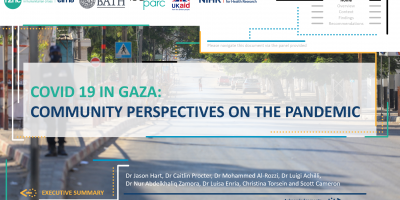Children living in Gaza have never known anything but overcrowding, shortages, conflict and danger.
It’s been 18 years since the then Israeli prime minister, Ariel Sharon, moved all Israel’s settlers and military personnel out of the Gaza Strip. The country’s official narrative then became that they were no longer an occupying force.
But two years later, following the election of Hamas, the Israeli government imposed a blockade on the entire Gaza Strip. So today’s 18-year-olds have suffered in a state of privation for pretty much their whole lives.
Relocation of settlers and soldiers and the imposition of the blockade did not release Israel from its responsibility under international law towards the civilian population in Gaza. According to the International Committee of the Red Cross, Israel is still “bound by certain obligations under the law of occupation”. As detailed in article 55 of the fourth Geneva convention, this includes ensuring that the population of Gaza receives food, medicines and other basic goods.
But over recent days the Israeli government has tightened the blockade so that even commodities essential for survival are denied to the civilian population. As researchers on the protection of children in Gaza, we – the authors of this article – are receiving messages from families that they are surviving on bread and contaminated water.
The world is learning, almost in real time, about the impact on the children of Gaza of the latest siege-like conditions imposed by Israel in the wake of Hamas’ attacks. The lack of water and food is inevitably affecting the young more immediately and more severely than adults.



